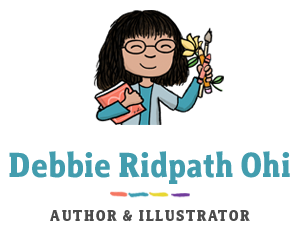Feel free to download and print any of my templates for book creators for your own use, or for educational use. My only request: that you please leave the copyright/credit intact, to help people find my website and other free resources. Thanks! — Debbie Ridpath Ohi
For those who already know how to use them, here are my print-ready templates; just click on any thumbnail image for the full PDF. For instructions on how to use them, scroll further down on the page.
Also see my Resources For Children’s Book Creators, Free, Print-Ready Library, my Answers To Frequently Asked Questions, and my Picture Books 101 posts on Substack.
Click on any image below to access the full PDF.
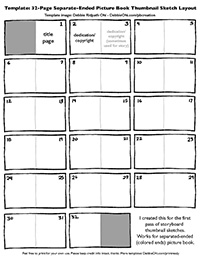
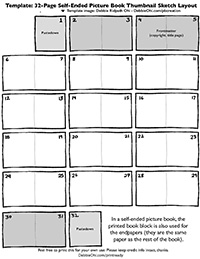
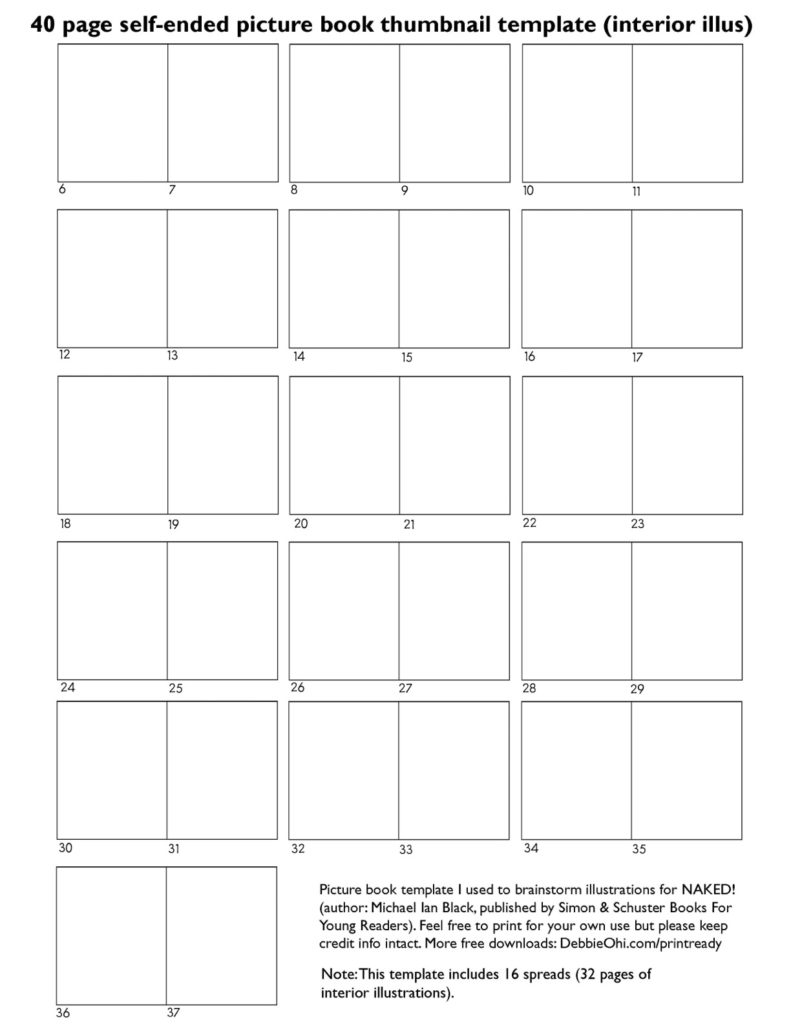

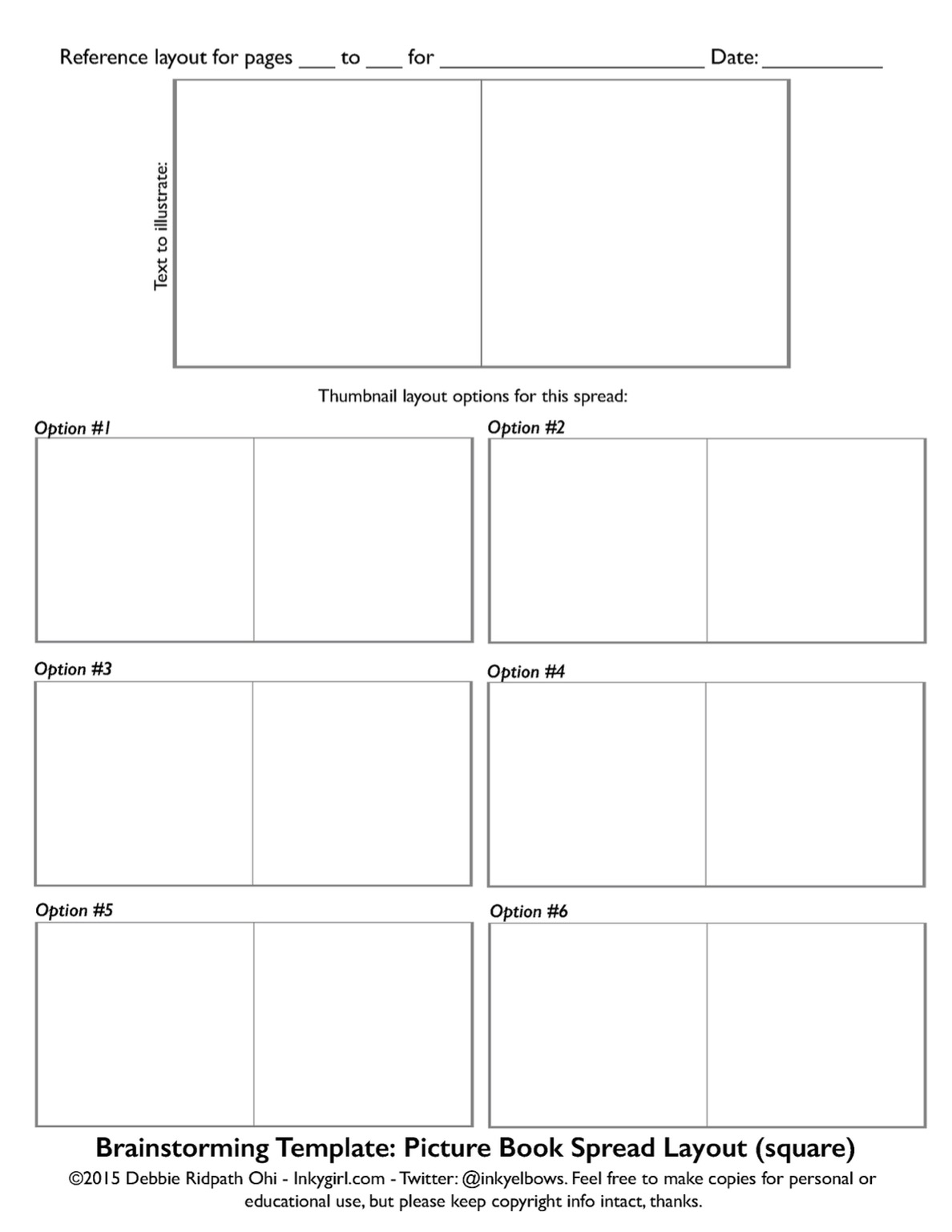
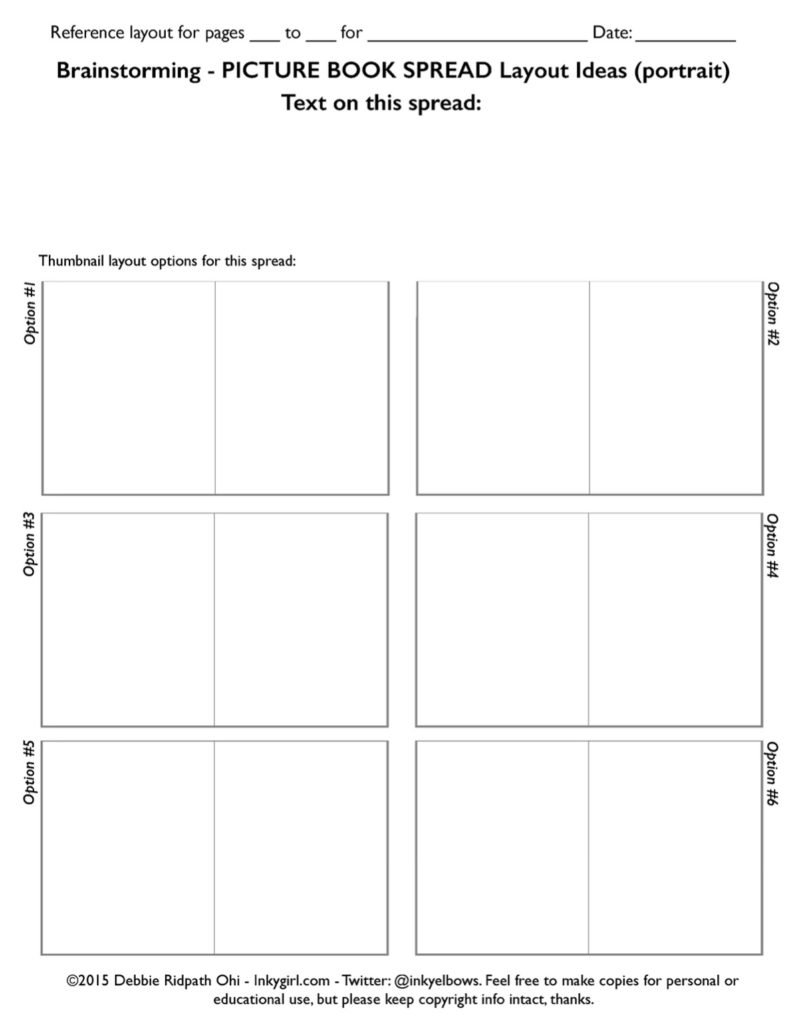



How To Use My 32- and 40-Page Thumbnail Templates
Picture book writers sometimes use my thumbnail templates to help them understand picture book format, how to paginate their manuscripts, and help see why a standard 32 page picture book does not have all 32 pages available for story content. To download any of the following templates, please click on the image in the group near the top of the page.
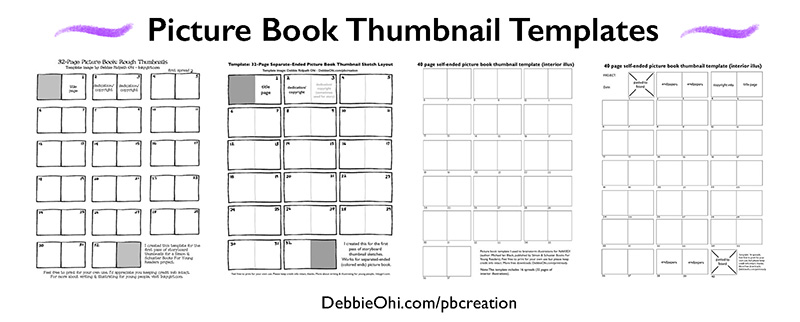
My advice for new picture book authors who do not yet have a contract is to stick with the 32-page format if at all possible. While more pages can be added (e.g. 40-page), it will cost the publisher more money. Once an editor has acquired your mss or has started talking with you about it, you could always mention that you do have a longer version, if they wish to see it. When I submit a picture book mss, I stick with the 32-page standard and let my editor decide whether or not it needs more pages.
As a picture book author AND illustrator as well as picture book illustrator, I use these picture book thumbnail templates to help me figure out pacing and arc. I use stick figures so I don’t get too wedded to art details yet.
Examples:
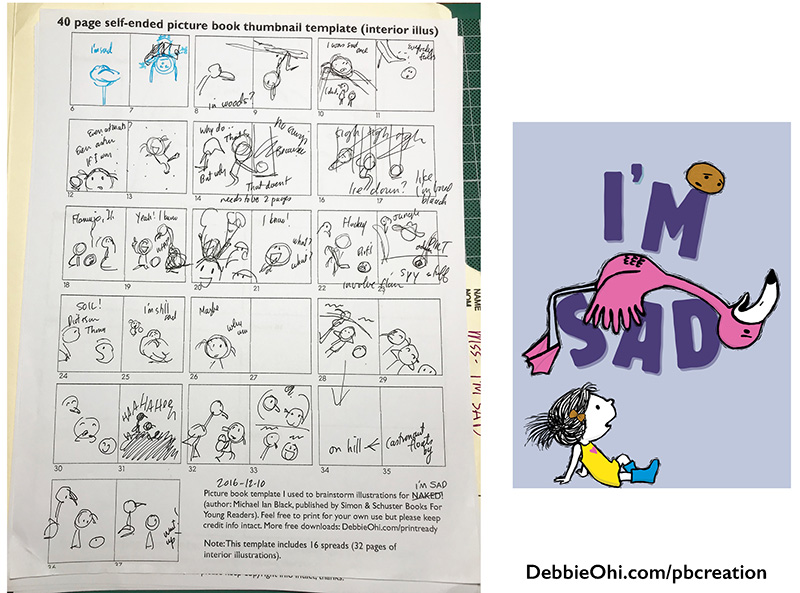
Note: These scribbled templates are just for me to work out pacing, arc, and page turns. I don’t send these to my art director or editor. I do, however, know some picture book illustrators work up their own very polished-looking thumbnail templates and DO send these in. Usually these are cases where the art director and editor are already familiar with the illustrator’s process.
Anyway, once I’m happy with the thumbnail template, then I start working on the initial layout sketches.
Curious about why 32-pages is the standard? See my Substack post on the topic, Picture Books 101 (Part 3): Understanding Picture Book Format and Construction.
How To Use My Brainstorming Templates
I created these templates to help me brainstorm visual solutions when figuring out a sketch for any particular spread. When I first began illustrating picture books, my tendency was just to go with the obvious visual solution. Now I know it’s always worth taking the time to fully explore different solutions before settling on one. The last template is the newest version; I realized that it was easier just to write the text above without deciding on placement yet.

Having multiple visual solutions makes it easier when I’m figuring out my thumbnail template, giving me choices as I tweak to improve visual flow, arc and pacing.
EXAMPLES:
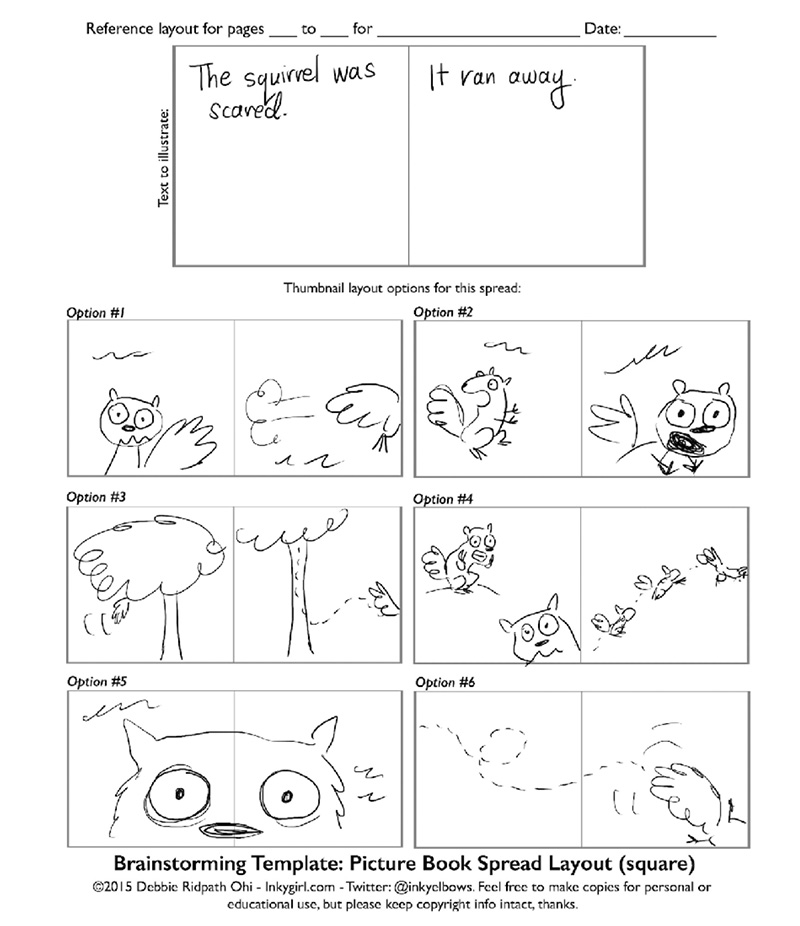
The above was just made up. ? The one below is a sample from my brainstorming process for Gurple and Preen: A Broken Crayon Cosmic Adventure, written by Linda Sue Park and illustrated by me (Simon & Schuster).
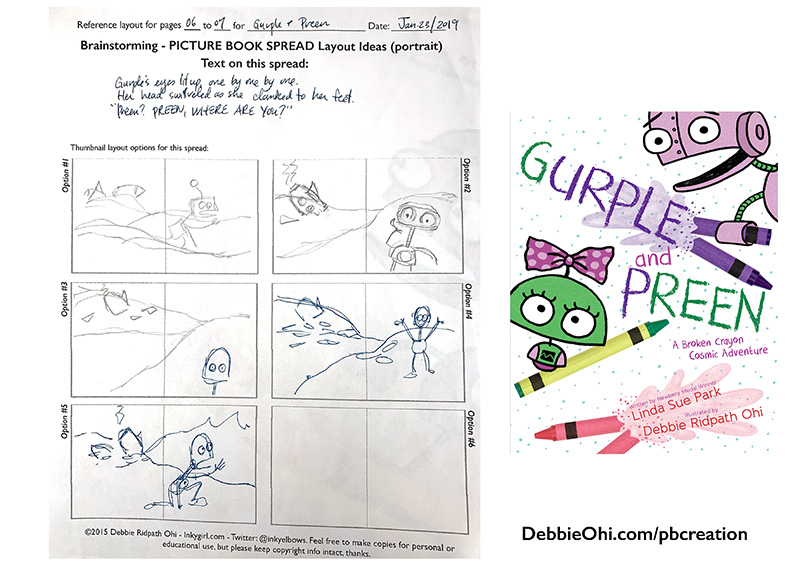
And here’s what the final spread ended up looking like:

I hope these templates are useful! Also see my Resources For Children’s Book Creators, Free, Print-Ready Library, my Answers To Frequently Asked Questions, and my Picture Books 101 posts on Substack.

